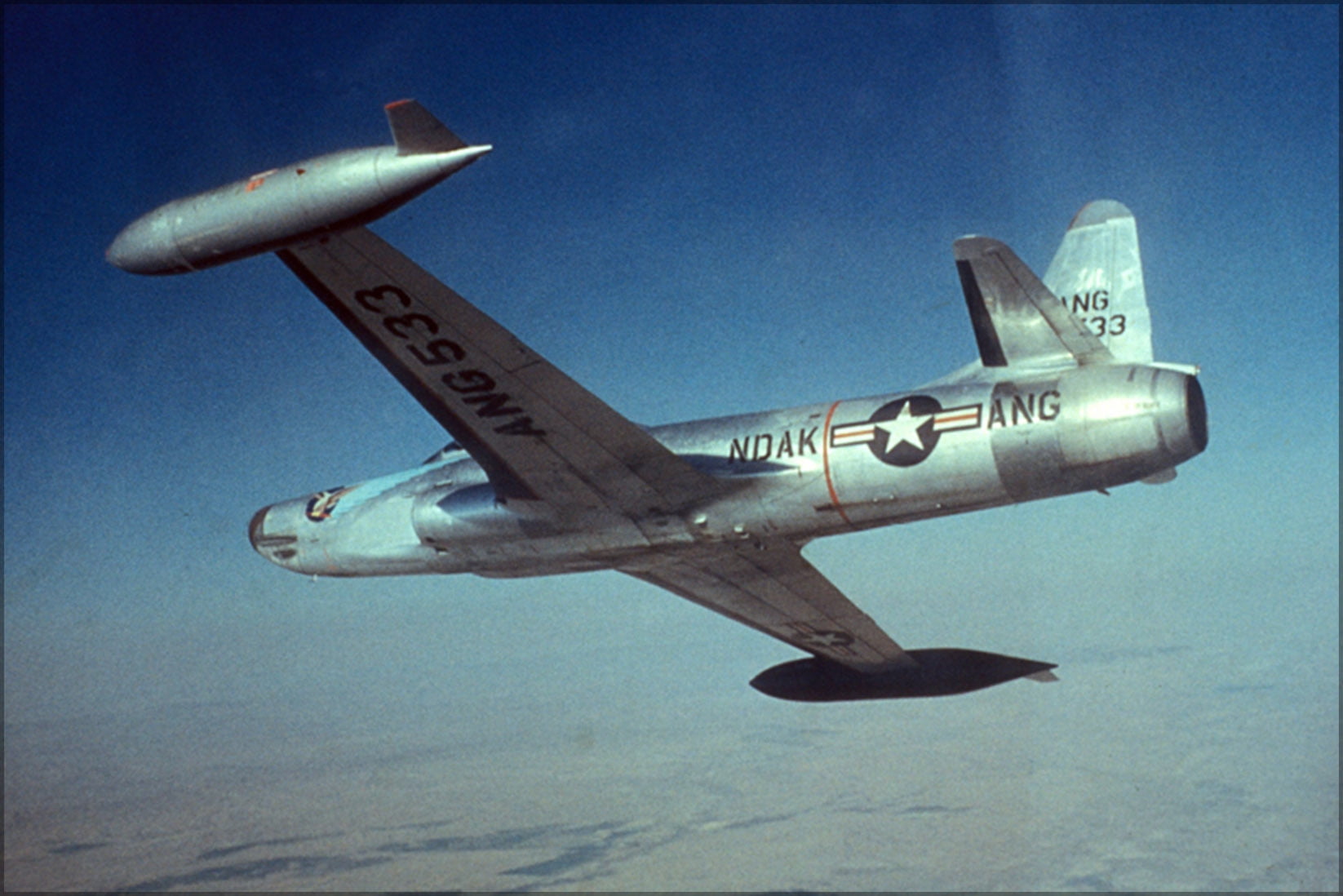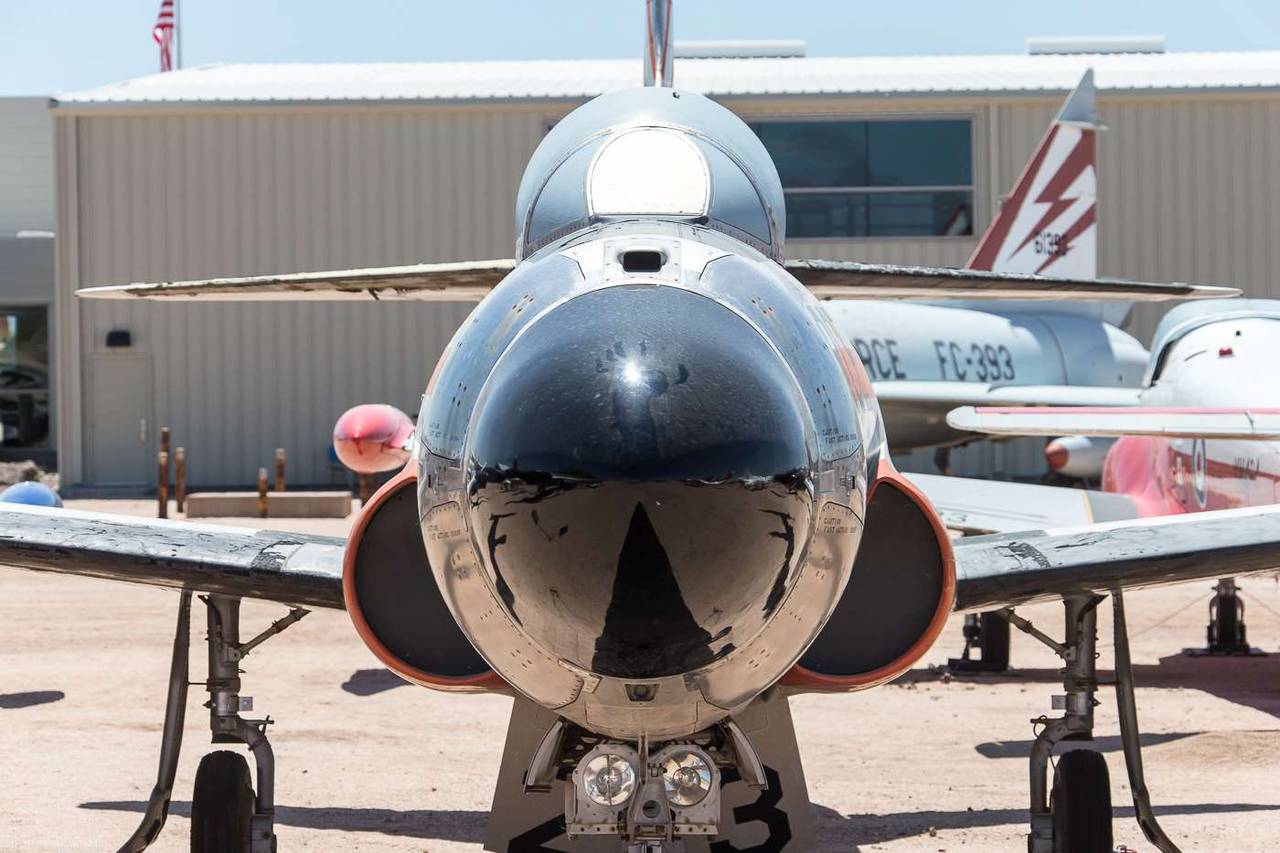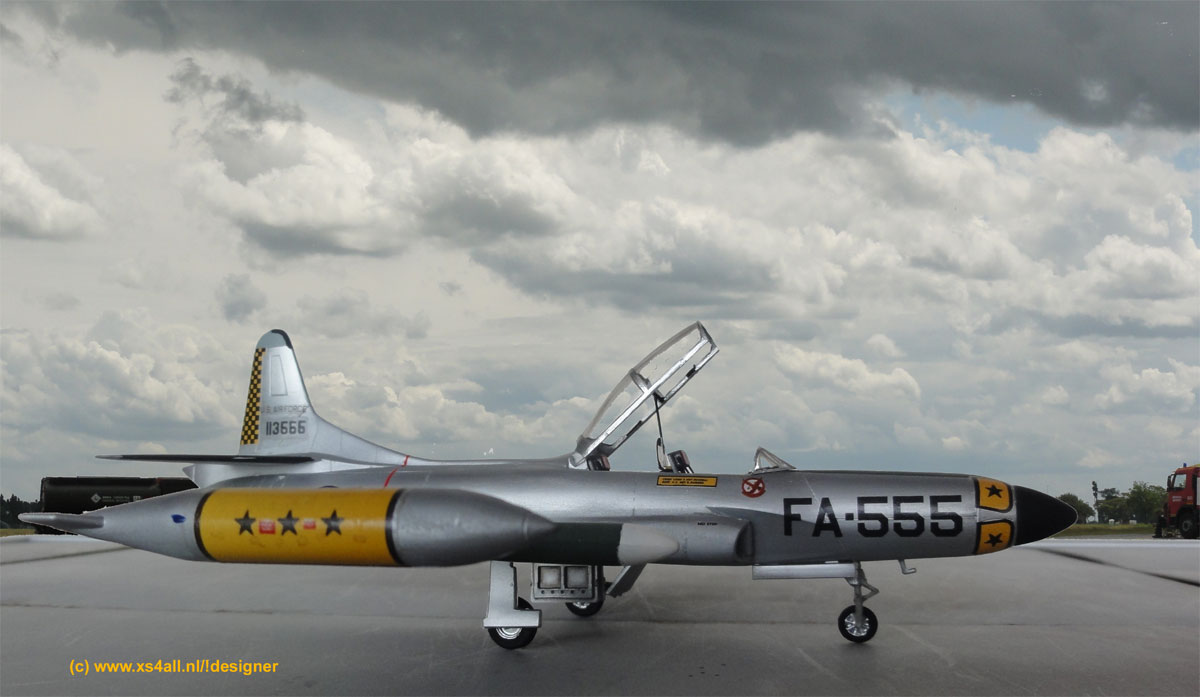America's First Supersonic Interceptor Was a Flying Bottle Rocket Us

The History of the Lockheed F-94 Starfire. The F-94 (known only as the "Spark" in the "C" variant) was developed from the successful Lockheed two-seat trainer, known as the T-33 Meteor, itself based on the single-seat P -80/ F -80 Meteor. The system was designed to outperform the F-80 in performance, but more importantly to intercept new.
FLIGHTLINE 112 LOCKHEED F94 STARFIRE Come for the cars, stay for

Third member of Lockheed's F-80 family, the F-94 Starfire was evolved to satisfy a requirement for a two-seat all-weather radar-equipped fighter. It was evolved from the two-seat T-33 trainer and originally used many of the main components and the production facilities of its predecessor. The prototypes were converted T-33, each with a new 26.
24"x36" Gallery Poster, Air Force F94 Starfire fighter North Dakota

The F-94C was flown by the 109th Fighter-Interceptor Squadron and the 279th Fighter-Interceptor Squadron of the Minnesota Air National Guard from 1954 to 1959. The F-94 was built to a 1948 USAF specification for a radar-equipped interceptor specifically designed to counter the threat of the USSR's new Tupolev TU-4 bombers (a reversed.
Lockheed F94 Starfire Photo Gallery

The Lockheed F-94 Starfire Was America's Aerial Warrior The Starfire was also the first U.S. production jet to have an afterburner. by Peter Suciu Here's What You Need to Know: The F-94.
AVIÕES MILITARES Lockeed F94 Starfire

June 10, 2023 Craig Bowman Payen PA-22: Delta Wing Pioneer from 1930s Lockheed F-94 Starfire was the first operational jet-powered all-weather interceptor of the US Air Force, as well as the first USAF fighter to use an afterburner.
Des pilotes et des avions. Lockheed F94C Starfire
.jpg)
The Lockheed F-94 was the United States Air Force's first operational jet-powered all-weather interceptor aircraft. Contents 1 Lockheed YF-94 2 Lockheed F-94A 3 Lockheed F-94B 4 Lockheed F-94C 5 Other photos Lockheed YF-94 [ edit] YF-94 prototype YF-94 prototype Lockheed F-94A [ edit] F-94A F-94A F-94A 2d FIS 49-2538 2d FIS 49-2548
Caças, Avioes de combate, Aviação

The F-94 (nicknamed "Starfire" in the "C" model only) was developed from the successful twin-seat Lockheed trainer aircraft known as the T-33 Shooting Star, which in itself was based on the single-seat P-80 / F-80 Shooting Star.
Lockheed F94 Starfire Specifications Technical Data / Description

ON THE MID WATCH 12AM-6AM, A F-94 CALLED FOR TAXI TO THE TEST AREA WHICH WAS COMMON OCCURENCE. WELL!. As I recall, the 66th fighter squadron lost about 12 of 25 aircraft assigned to the squadron during their first 18 month flight service period due to accidents related mostly to foul weather flight. At least two aircraft were on 24/7/52.
FLIGHTLINE 112 LOCKHEED F94 STARFIRE Come for the cars, stay for

Third member of Lockheed's F-80 family, the F-94 Starfire was evolved to satisfy a requirement for a two-seat all-weather radar-equipped fighter. It was evolved from the two-seat T-33 trainer and originally used many of the main components and the production facilities of its predecessor.
Lockheed F94 Starfire Lockheed, Starfire, Fighter

Subscribe to Dark Skies: https://bit.ly/dark5skies Lockheed's F-94 Starfire was the first US jet with an afterburner developed as part of the first generation of jet aircraft for the United.
Lockheed F94C Starfire Allweather Interceptor Fighter

The F-94 was the first operational USAF fighter equipped with an afterburner, and first jet-powered all-weather fighter to enter combat during the Korean War in January 1953. It had a relatively brief operational life, being replaced in the mid-1950s by the Northrop F-89 Scorpion and North American F-86D Sabre. The last aircraft left active.
F15 fighter jet military airplane eagle plane (84) wallpaper

F94 Price: US$0.5 million (1952) Performance Weights Dimensions Avionics: AN/APG-40 radar Engine: 1x Pratt & Whitney J48-P-5 Jet Power: 8,750 pound-force Max Cruise Speed: 560 knots
Lockheed F94C Starfire USA Air Force Aviation Photo 1532312

The F-94 series all-weather interceptors were developed from the Lockheed P-80 Shooting Star. The prototype F-94 first flew on July 1, 1949. The Starfire was subsequently produced in the A, B and C series. The F-94C (originally designated the F-97A) was a fundamental redesign of the F-94B and made its first flight on Jan. 18, 1950.
Pin on F94 Starfire

The Lockheed F-94 Starfire was the United States Air Force 's first operational jet-powered all-weather interceptor aircraft. It was a development by Lockheed from the twin-seat T-33 Shooting Star trainer aircraft. Contents 1 Design and development 2 Operational history 3 Variants 4 Operators 5 Aircraft on display 6 Specifications (F-94C Starfire)
F94 Starfighter Interceptor by Lockheed Lockheed, Fighter jets

The Lockheed F-94 Starfire was a first-generation jet powered all-weather day/night interceptor aircraft designed and produced by Lockheed Corporation. It was the first operational United States Air Force (USAF) fighter equipped with an afterburner as well as being the first jet-powered all-weather fighter to enter combat during the Korean War .
Lockheed F94 Starfire

Third member of Lockheed's F-80 family, the F-94 Starfire was evolved to satisfy a requirement for a two-seat all-weather radar-equipped fighter. It was evolved from the two-seat T-33 trainer and originally used many of the main components and the production facilities of its predecessor. The prototypes were converted T-33, each with a new 26.